By Greg Ducharme, Product Director
Laird Thermal Systems
There are several factors to keep in mind when operating and managing modern laboratories: efficiency, cost management and future-proofing. Green labs provide the blueprint for equipment optimization and environmental compliance, which in turn minimize energy consumption, lower operating costs and set labs up for continued success.
Thermal management has emerged as an integral component in today’s modern lab. Enabling energy conservation and performance improvement, temperature control with liquid cooling equipment creates the ultimate, environmentally friendly environment for a wide variety of research and industrial applications – chemistry, biology, oil & gas and food science, to name a few.
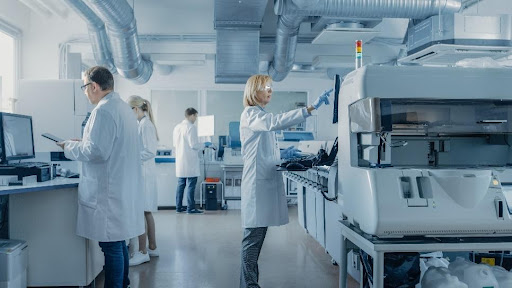
Liquid cooling systems create the ultimate laboratory environment for a wide range of research applications where temperature control is critical.
As equipment, methods and processes become more and more complex, so too do the organization and setup of the lab itself. While more electronic devices require increased energy consumption, the trend towards miniaturization of equipment increases the heat flux density and heightens the thermal challenges. Recirculating chillers more efficiently provide the necessary heat dissipation, and increasingly are utilized for high-power microscopes, electron microscopes, mass spectrometry and many chromatography-type applications.
Laboratory certifications for Green Labs
Many governmental and environmental regulations impact design of laboratory equipment. For example, LEED (Leadership in Energy and Environmental Design) certification demonstrates a lab is environmentally responsible, and there are often tax breaks and other perks for being LEED-certified. OEMs increasingly aim to design products that will help labs meet this standard.
In Europe, laboratory equipment must comply with RoHS and RoHS 2, which restricts the use of mercury, lead and some of the chromates used in equipment. Another certification to take in consideration is REACH, which controls the use and amount of chemical substances used to make a product.
UL is one of several companies approved to test and develop industry standards for product safety. A significant aspect of the requirements centers on guaranteeing the safety of the operators and electromagnetic compatibility, ensuring products won’t cause interference or impede the operations of other lab equipment.
Refrigerants
The use of refrigerants — a key ingredient in today’s liquid chillers — may be the primary concern for green laboratories seeking an efficient cooling technology. Many labs look at the global warming potential (GWP) of a given refrigerant. The previous generation of refrigerants were developed to reduce impact on the ozone, using hydrochlorofluorocarbons and hydrofluorocarbons (HCFCs and HFCs). These had significantly lower amounts of chlorine, so the ozone-depleting potential was reduced. However, these refrigerants continued to have high GWP ratings.
In the current generation of refrigerants, formulas are returning to natural and alternative refrigerants. They have no chlorine and very low, or even zero, global warming potential. However, their toxicity and flammability are issues, which present safety challenges when designing liquid cooling systems that can handle pressures many times what is considered the typical operating pressure. Further, transportation organizations (especially air) limit the amount of refrigerant that can be stored within a system. This, in turn, restricts the cooling capacity of the liquid chiller. Luckily, as some lab equipment tend to have lower capacity requirements, systems using alternative refrigerants can be utilized.
A great interim solution is refrigerant R513A, which still offers one-half to one-eighth of the GWP commonly used in the industry today. Additionally, it is not considered flammable or toxic, so design impact is minimal and transportation restrictions do not exist. The overall thermal efficiency is very similar to other refrigerants as well, so cooling system size does not increase to use more valuable lab floor space.
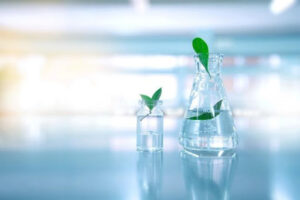
Many labs are looking for chillers utilizing environmentally friendly refrigerants with zero or low global warming potential (GWP)
Today’s liquid cooling systems for labs
Modern laboratories utilize a variety of cooling systems including those used for bulk heat removal and those that precisely cool environments below ambient temperature. Liquid heat exchangers and recirculating chillers provide these capabilities, enabling the equipment to perform at higher levels. This technology uses high heat pumping capacity to remove heat from very high heat flux density applications such as electronics. Heat routing is very simple; fluid passes through small hoses to and from the equipment at high flow rates and often within micro-channels at high fluid velocities to quickly cool down applications.
Liquid cooling systems can also provide labs with reduced noise impact by utilizing variable speed compressors and condenser fans. Systems often operate in a stand-by state when cooling low operating loads for extended periods of time, but can be pushed to cool at full capacity very quickly. Variable speed compressors and condenser fans change the speed of the motors to match the cooling requirements and require less air flow to achieve specified performance levels. This results in a reduction of noise and energy consumption in operating systems, which is important to any lab space that has prioritized going green.
For laboratory equipment with lower cooling requirements, thermoelectric-based recirculating chillers may be a better solution. Utilizing solid-state thermoelectric technology, thermoelectric chillers offer high reliability and very precise temperature control in a compact form factor. In addition, thermoelectric chillers do not use any refrigerants, resulting in zero global warming potential.
Benefits for a greener lab
The biggest impact recirculating chiller systems can have on labs is the effect they have on energy consumption. By consuming less energy, the system is rejecting less heat into the environment, which reduces the impact on the HVAC system.
Finding products manufactured with proven components and technologies results in high reliability and low maintenance for chillers. For example, a turbine pump (a regenerative turbine with near-zero wear parts) ensures about four times the expected life of some of the competing technologies. Some recirculating chiller solutions employ vented systems, which are very easy to install and start up. However, their downside is evaporative losses and interaction with the surrounding environment, which can include dust or bio-growth. Some of today’s liquid chillers use a hydraulic system with a pressure cap on the reservoir, creating a semi-closed hydraulic system that has the same start-up benefits of a vented system. This type of design seals off the system from the external environment unless high pressures are encountered, where air would be vented to reduce the pressure. Under normal operating pressures, the system is closed off from the environment all the time. There is no bio-growth and no evaporative losses, providing a very low maintenance design that offers true benefits to greener labs.
Conclusion
Efficiency is the overarching theme when it comes to future-proofing laboratories. Saving costs and energy consumption can improve workflow and production while contributing to a better environment. Thermal management via recirculating liquid chillers promotes a greener organization by reducing the burden on building systems and overall energy usage. This method of thermal control results in both extended equipment life as well as an environmentally friendly workspace.

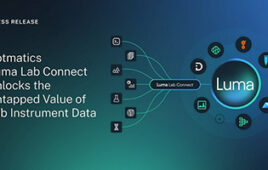
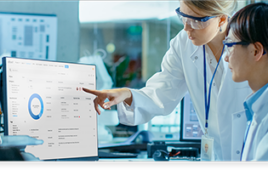
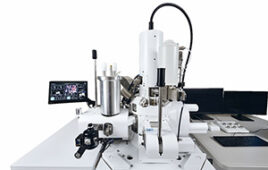
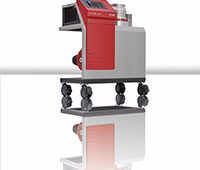
Tell Us What You Think!